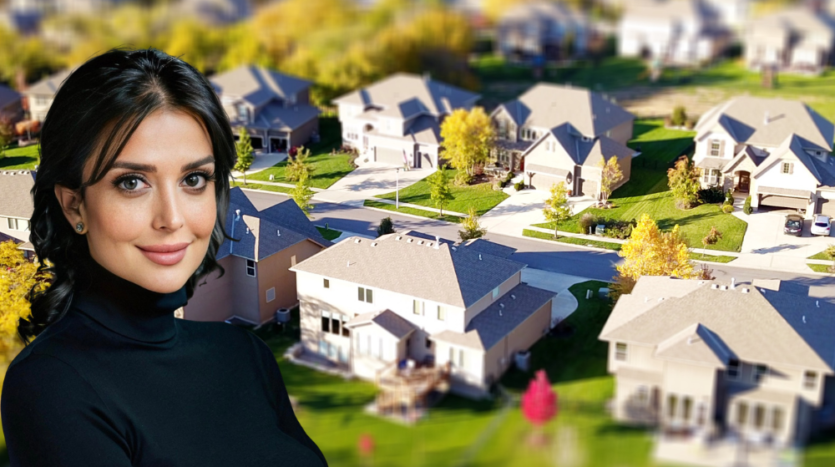How Can I Learn About My New Neighborhood?
Moving to a new neighborhood can be both exciting and a bit overwhelming. Whether you’re moving across town or to a completely different city, getting to know your new surroundings is key to feeling at home. Learning about your new neighborhood will help you settle in more quickly, make new friends, and ensure that you’re aware of all the amenities and opportunities nearby. Here’s a guide on how to learn about your new neighborhood, broken down into simple steps.
1. Take a Walk Around
One of the best ways to get acquainted with your new neighborhood is by simply taking a walk. Strolling through the streets, parks, and public spaces gives you a firsthand experience of the area’s atmosphere. Pay attention to the types of homes, the local shops, restaurants, and cafes, as well as the general vibe of the neighborhood.
Walking allows you to observe things you might not notice when driving, like the presence of bike lanes, pedestrian crossings, and community bulletin boards. These small details will help you understand how people in the neighborhood live, work, and interact.
Things to Look for During Your Walk:
- Parks and Green Spaces: Notice where the local parks are, and see if they have playgrounds, sports facilities, or walking trails.
- Shops and Restaurants: Take note of the grocery stores, convenience stores, cafes, and restaurants. Knowing where to grab a quick bite or pick up essentials is important.
- Public Transportation: Look for bus stops, train stations, or bike-sharing stations if you plan on using public transportation.
- Safety Features: Check out the lighting on streets and in public areas, and observe how safe the neighborhood feels, especially at different times of the day.
2. Introduce Yourself to Neighbors
Getting to know your neighbors is one of the quickest ways to learn about your new community. A simple “hello” can lead to friendly conversations where you can gather useful information. Your neighbors might have lived in the area for years and can provide insights that you won’t find in any guidebook.
When introducing yourself, don’t hesitate to ask questions. You can inquire about local events, the best places to eat, or any neighborhood traditions. Some neighbors may even invite you to join local activities, which can help you feel more connected.
Tips for Meeting Neighbors:
- Start with Immediate Neighbors: Knock on the doors of the houses or apartments closest to yours. These are the people you’re most likely to see regularly.
- Attend Local Events: If there’s a community event, like a block party or a garage sale, make sure to attend. These events are great opportunities to meet a larger number of people in a relaxed setting.
- Be Friendly and Open: Smile, be polite, and show genuine interest in what your neighbors have to say.
3. Explore Online Resources
The internet is a treasure trove of information, and there are many online resources that can help you learn about your new neighborhood. Start by searching for local community groups on social media platforms like Facebook or Nextdoor. These groups often share information about local events, services, and other neighborhood news.
You can also use Google Maps to explore the area from the comfort of your home. By using the “Street View” feature, you can virtually walk around the neighborhood and see what it looks like. Additionally, websites like Yelp can help you find the best-rated restaurants, shops, and services in your area.
Useful Online Resources:
- Social Media Groups: Join Facebook or Nextdoor groups specific to your neighborhood.
- Community Websites: Many neighborhoods have their own websites where they post news, events, and resources.
- Local News Websites: Follow local news outlets to stay informed about what’s happening in your area.
- Yelp or Google Reviews: Read reviews to find the best places to eat, shop, and more.
4. Visit Local Businesses
Supporting local businesses is a great way to get to know your neighborhood while also contributing to the local economy. Visit nearby shops, cafes, and restaurants to see what they offer. Chat with the owners or staff—they often have deep roots in the community and can provide valuable information about the area.
Local businesses are also great places to pick up flyers or brochures about community events, clubs, or classes. Many small businesses participate in or sponsor local activities, so they can be a good source of information.
How to Explore Local Businesses:
- Start Small: Begin by visiting a local coffee shop or bakery. These places often have community bulletin boards with information about local events.
- Try Something New: Be adventurous and try a new type of cuisine or a specialty store you’ve never visited before.
- Support Local: Whenever possible, choose to buy from local businesses rather than big chains. It’s a great way to invest in your community.
5. Attend Community Events
Community events are one of the best ways to immerse yourself in the culture of your new neighborhood. These events can range from farmers’ markets and art fairs to neighborhood cleanups and holiday celebrations. Attending these events allows you to meet more people, learn about local traditions, and participate in activities that bring the community together.
To find out about these events, keep an eye on community bulletin boards, local newspapers, or social media. Many neighborhoods have regular events, and attending them can become a fun part of your routine.
Types of Community Events to Look For:
- Farmers’ Markets: A great place to buy fresh produce and meet local farmers.
- Festivals and Fairs: These often showcase local culture, food, and entertainment.
- Volunteer Opportunities: Joining a local volunteer group can help you make a positive impact while meeting like-minded people.
- Workshops and Classes: Many communities offer classes in art, cooking, or fitness, providing a fun way to learn new skills.
6. Visit the Local Library
Local libraries are not just for borrowing books—they’re community hubs that offer a wide range of resources. Many libraries host events, workshops, and clubs that are open to the public. Libraries often have bulletin boards filled with information about local services, events, and groups.
Additionally, librarians are usually knowledgeable about the community and can help you find information about your neighborhood. They can also recommend local books, magazines, or newspapers that provide insight into the area’s history and culture.
What to Do at the Library:
- Get a Library Card: This gives you access to not only books but also digital resources and events.
- Check the Events Calendar: Libraries often host book clubs, author talks, and children’s activities.
- Ask for Recommendations: Librarians can suggest books or resources that give you a deeper understanding of your neighborhood.
7. Explore the Local Parks and Recreation Centers
Parks and recreation centers are great places to relax, exercise, and meet people. Visit the local parks to see what facilities are available, like playgrounds, sports fields, or walking trails. Many parks host events such as outdoor movies, concerts, or fitness classes.
Recreation centers often offer classes and activities for all ages, from yoga and dance to swimming and basketball. Joining a class or a local sports team is a fun way to meet new people and stay active.
How to Make the Most of Parks and Recreation Centers:
- Join a Class or Team: Participating in a class or sports league is a great way to meet people and stay fit.
- Attend Events: Keep an eye out for community events held in parks, such as outdoor movie nights or festivals.
- Use the Facilities: Whether you enjoy jogging, playing tennis, or having a picnic, make use of the amenities available.
8. Get Involved in Local Organizations
Joining local organizations is another excellent way to learn about your new neighborhood and contribute to the community. These can include neighborhood associations, volunteer groups, or special interest clubs. By getting involved, you’ll not only learn more about the area but also help shape its future.
Neighborhood associations often have regular meetings where they discuss local issues, plan events, and work on community improvement projects. Volunteering with local groups is a great way to give back while meeting others who are passionate about the same causes.
Types of Organizations to Consider:
- Neighborhood Associations: These groups work to improve the community and often organize events and meetings.
- Volunteer Groups: Look for opportunities to volunteer at local shelters, food banks, or environmental groups.
- Special Interest Clubs: Whether you’re interested in gardening, hiking, or reading, there’s likely a local club for you.
9. Research Local History
Understanding the history of your neighborhood can give you a deeper connection to the area. Researching the history of your neighborhood can be as simple as a quick online search, or you can dive deeper by visiting local museums or historical societies.
Many neighborhoods have a rich history that is reflected in their architecture, street names, and landmarks. Learning about the past can also help you appreciate the community’s current culture and traditions.
How to Research Local History:
- Visit Local Museums: Many areas have small museums or historical societies that focus on local history.
- Read Local Books or Articles: Look for books or articles about the history of your city or neighborhood.
- Talk to Longtime Residents: Longtime residents often have fascinating stories about how the neighborhood has changed over the years.
10. Stay Open and Curious
Finally, the best way to learn about your new neighborhood is to stay open and curious. Embrace the opportunity to explore new places, meet new people, and try new things. Moving to a new area is a chance to expand your horizons and discover all the unique aspects of your community.
Remember that learning about a new neighborhood is a gradual process. It takes time to feel truly settled, but with each new experience, you’ll feel more connected to your surroundings. So take your time, be patient, and enjoy the journey of getting to know your new home.
Final Thoughts:
Learning about your new neighborhood is an adventure. By exploring on foot, meeting your neighbors, using online resources, and participating in community events, you’ll quickly feel at home in your new surroundings. Remember, the more you engage with your community, the more rewarding your experience will be. Welcome to your new neighborhood—it’s time to start exploring!
Rana Real Estate Group is a trusted name in real estate, offering expert assistance for all your property needs. Whether you’re buying, selling, or investing, their experienced team provides tailored solutions and personalized service to help you achieve your goals. With a focus on integrity and transparency, they guide you through every step of the process, ensuring a smooth and successful transaction. Whether you’re a beginner or seasoned in real estate, Rana Real Estate Group is here to support you every step of the way.
Rana Khanjani, MBA
Specializing in Commercial, Residential & Land

